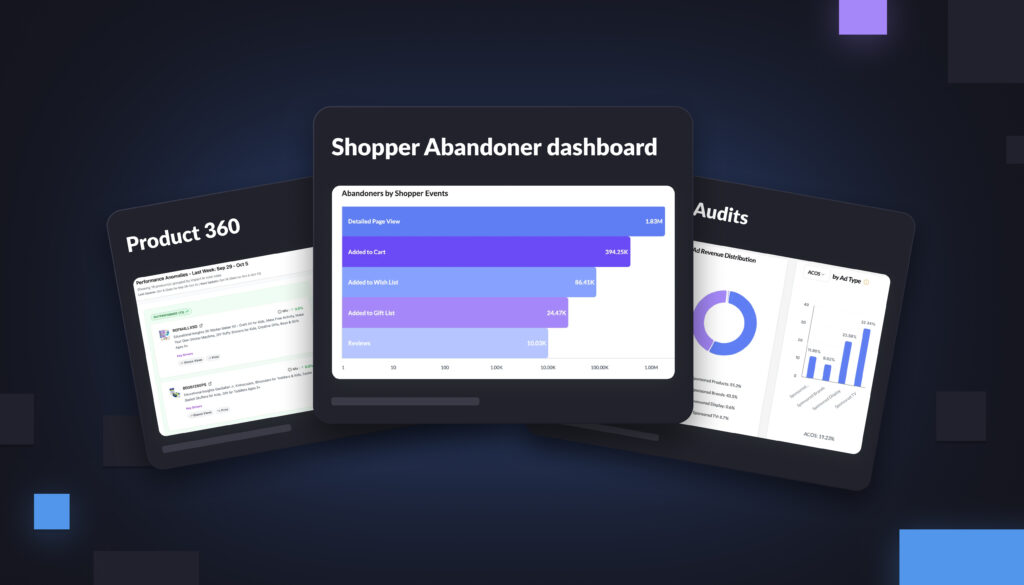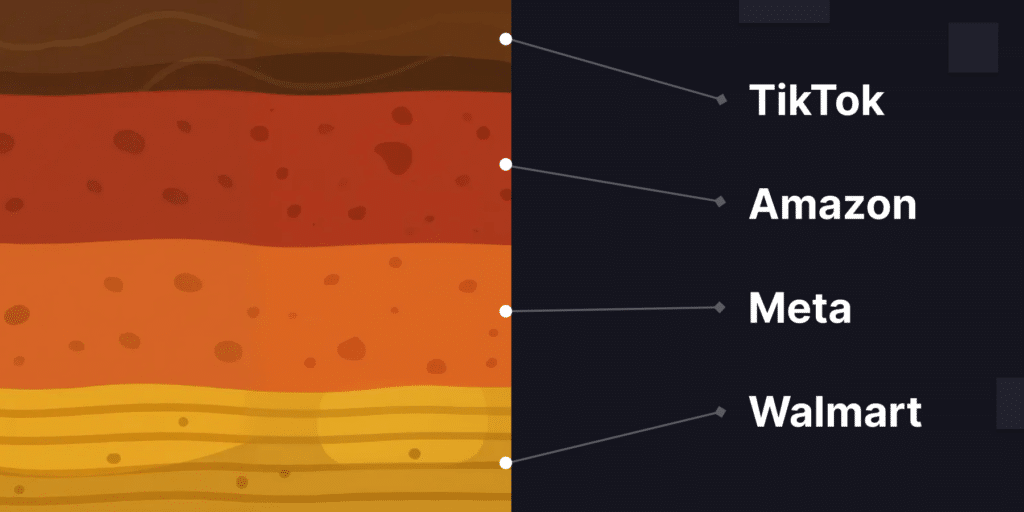What if you’re measuring your non-brand keyword ads wrong?
Most brands, sellers, and agencies are constantly running Sponsored Ads on their non-brand terms in the hopes of driving net-new customers.
The rule of thumb is that those ads on non-brand terms are going to perform worse than ads on brand terms, since the shopper isn’t specifically searching out your company.
That is true, yes—but it’s not always the full picture.
Under Amazon’s last-touch attribution system, only the last ad a shopper saw before their purchase gets credit for a sale. That means you’re not able to see when your non-brand ad was just the first step in a multi-step journey.
So is it possible that your non-brand ads are having larger impacts than you give them credit for?
How many shoppers are searching a generic term, seeing your non-brand ad, and then later searching your brand term?
Think of non-brand ads as awareness drivers
We don’t always think of non-brand Sponsored Ads as awareness plays. Awareness campaigns are more often discussed in the context of DSP ads, streaming TV ads, and so on.
But a lot of non-brand ads are doing that awareness work, covertly.
It’s not all about whether those ads directly drive a purchase. Often, your non-brand ad puts your product into the top of a customer’s mind, even if they don’t buy right away.
A shopper might see the ad, click your product page, and then the next day search your brand on Amazon. If your shoppers see another brand ad during that search, the original non-brand ad won’t get any credit.
This is the kind of common customer journey that was basically invisible to brands and agencies until recently.
Plenty of customers are seeing more than one sponsored ad from you—but, normally, you won’t be able to figure out how those ads work together.
Amazon Marketing Cloud changes all of that. In Amazon Marketing Cloud, you can assign equal credit to every ad that a shopper saw on their journey, so that more ads than the last one get credit for their work.
More to the point, you can also track how many people searched your non-brand terms and then later searched your brand term.
At Intentwise, we’ve built queries like this for brands like Made In Cookware. For what it’s worth, if you want to easily trace these unbranded —> branded searches, we can help.
Consult our expert team on what you’re looking for, and we can have a fully custom query ready for you in days.
Improve how you measure non-brand campaigns
Tracking how many shoppers go from unbranded to branded searches can lead you to rethink which non-brand keyword campaigns are working, and which aren’t.
Do your performance numbers get notably better or worse when you factor in these knock-on sales that happen after a branded search?
Is there a non-brand ad you’re running that may not drive a lot of conversion on its own but that is particularly effective at convincing people to do a brand search later?
Understanding these connections between non-brand-to-brand searches also improves your budget planning down the line.
If you know that, say, 5% of the people who see your non-brand ads will later search for a brand term, you can forecast your budget for brand vs. non-brand ads.
In this scenario, an increase in spend on non-brand terms should have something like a 5% knockdown increase on your brand terms spend.
You don’t want to miss out on these likely customers and forget to defend your terms.
These are the kinds of use cases of AMC that we’re excited to see more brands innovate in the coming months.
AMC has made it possible to get a truly holistic understanding of how your ads work together—and there’s no reason you shouldn’t conduct that kind of analysis across your Sponsored Ads, too.




